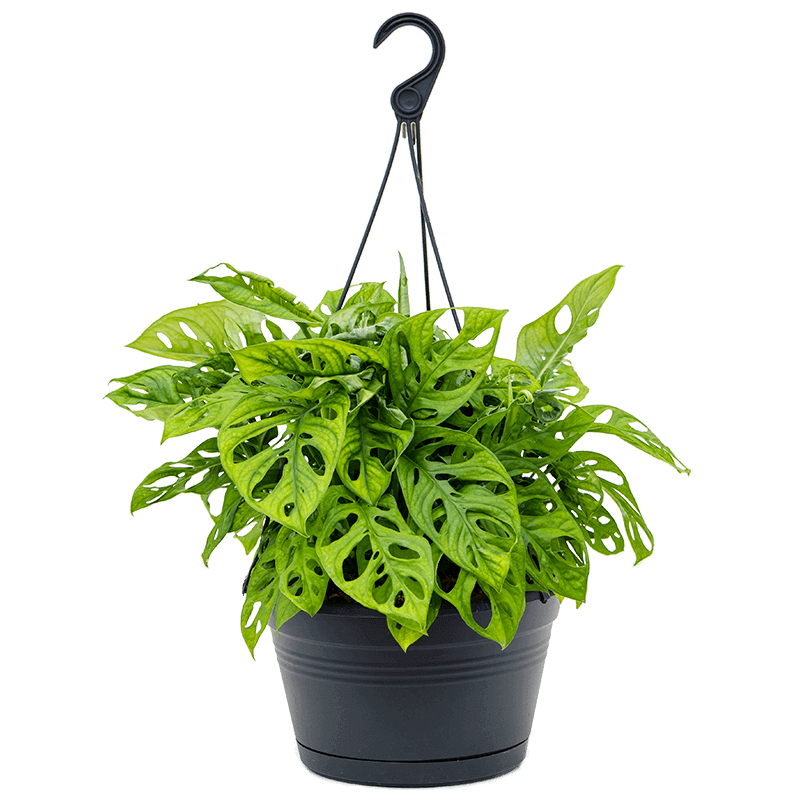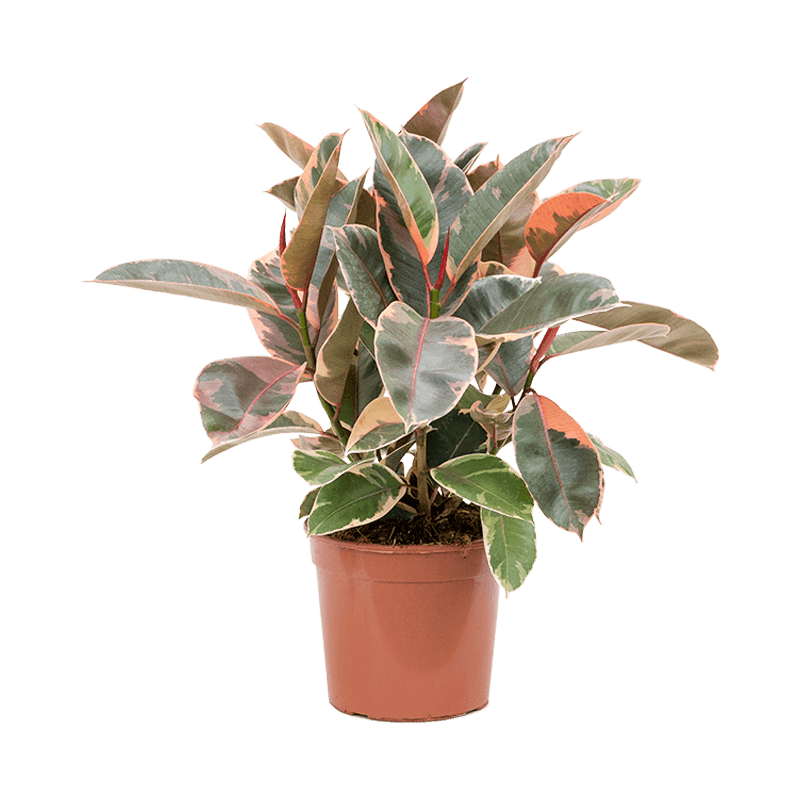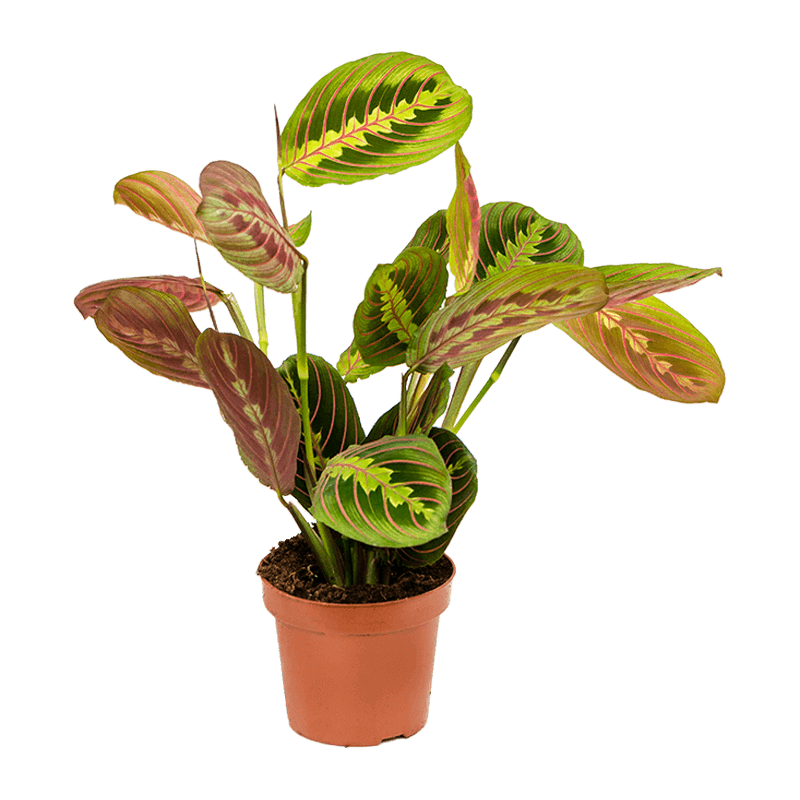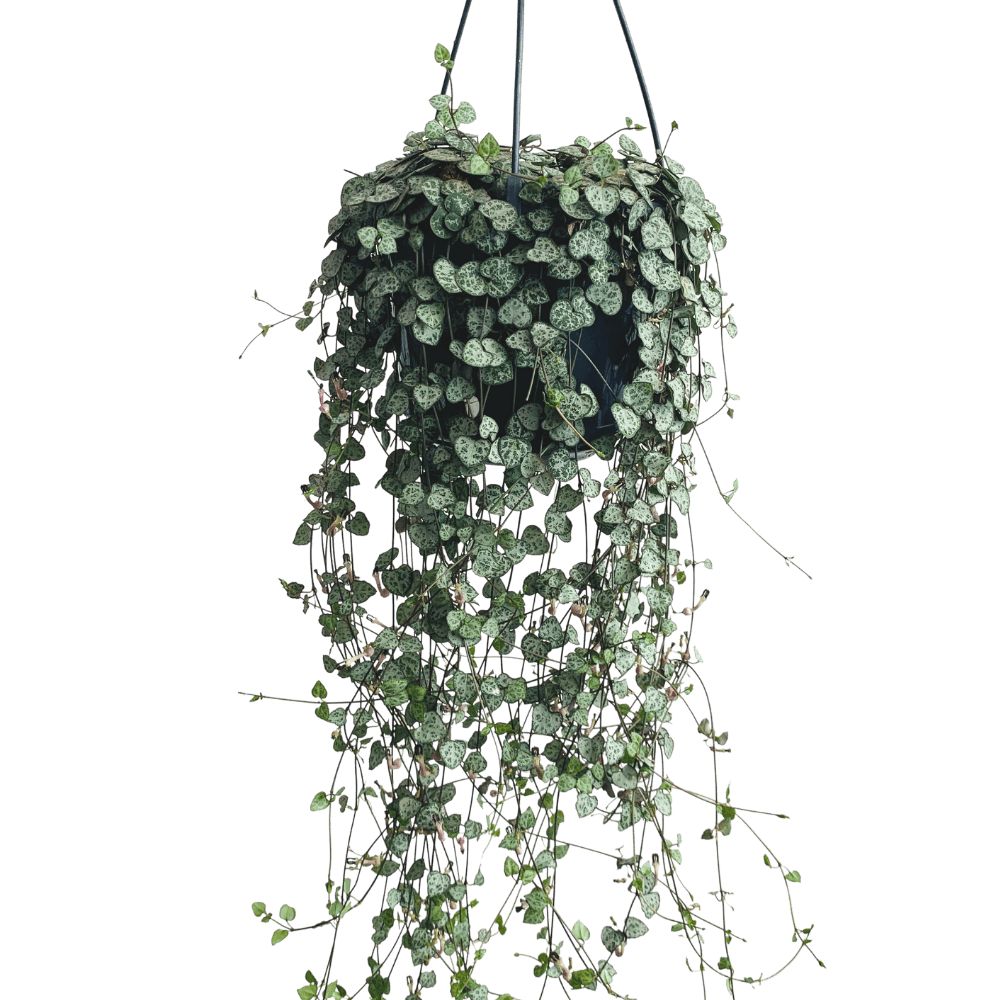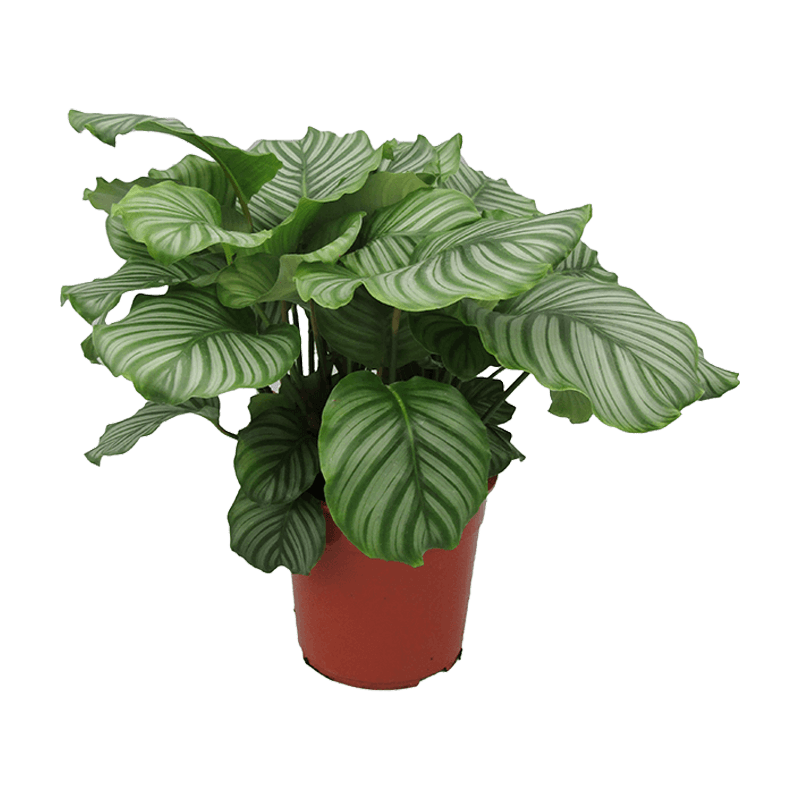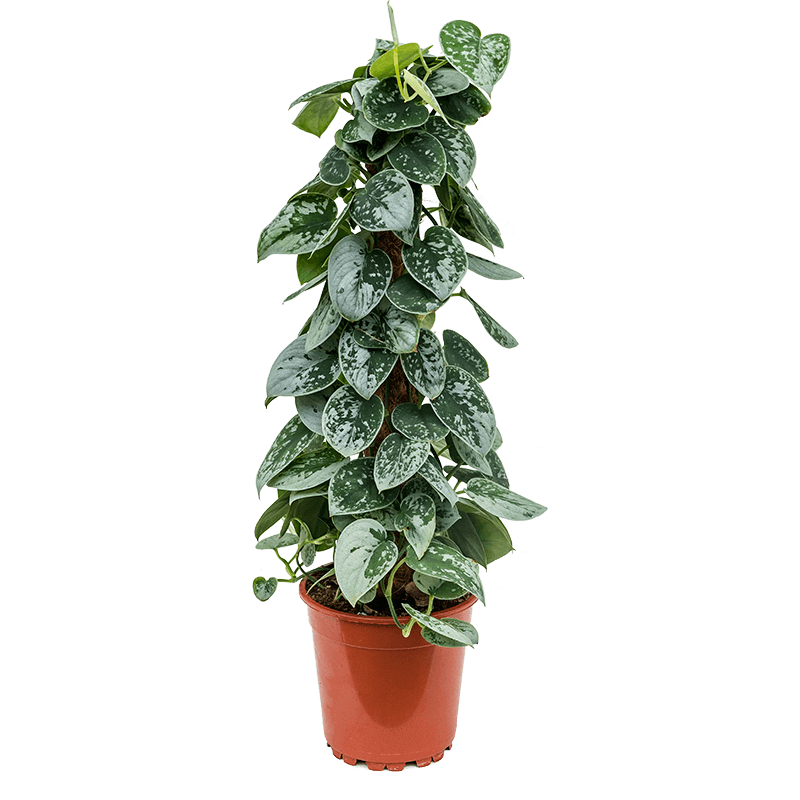how to care for monstera adansonii
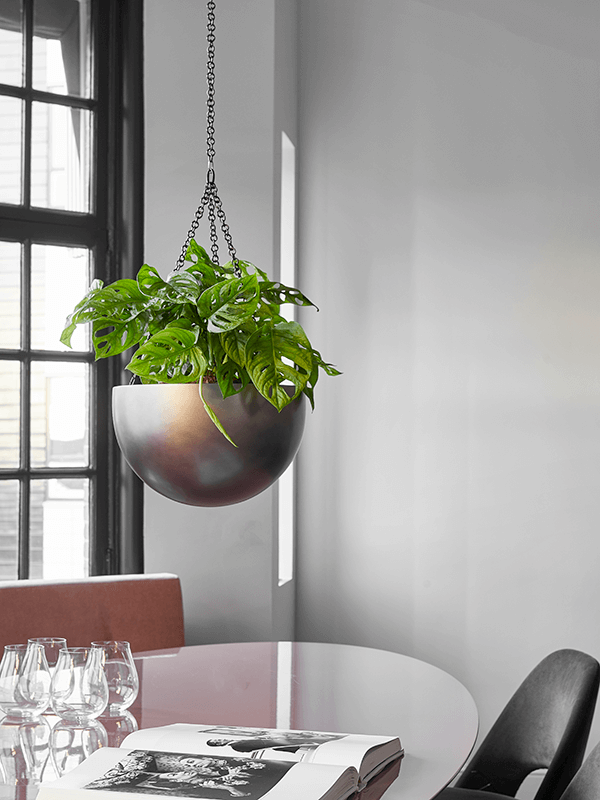
quick care guide for monstera adansonii
 |
Once a week in the summer; every 2 weeks in winter |
 |
Does best in medium to low light |
 |
Fertilize once every two weeks in the summer |
 |
Toxic to pets |
 |
Doesn’t do much in terms of air purification |
The Monstera Adansonii is a trailing plant so it will look best either in a hanging pot, on a high shelf or with a moss stick it can climb onto. A climbing Monstera adansonii produces larger leaves. Keep your plant in bright, indirect light and humidity above 60%. When watering, make sure that the potting mix of your Adansonii remains slightly moist and water about once a week. The best temperature range is between 18 to 27°C.
detailed care guide for monstera adansonii
Scientific Name: Monstera Adansonii – also known as Swiss Cheese Plant, Monstera Monkey Mask
Origin: Central and South America
Light: A nice brightly lit spot is ideal, without direct sunlight. The Monstera Adansonii can also adapt to lower light levels but will grow more leggy and with smaller leaves
Water: Before you water a Swiss cheese plant, do the knuckle test—stick your finger up to the knuckle into the soil to see how wet or dry the soil is. If the soil is nearly dry, water it. Don’t let the soil dry out entirely.
Soil: This plant grows best in peat-based potting soil in a pot that has a large drainage hole. The peat helps trap moisture in the soil without allowing it to become waterlogged. For strong growth, aim for a soil pH of 5.5 to 7.0.
Temperature: 18°C – 27ºC
Fertilizer: Fertilize every other time when you water during the summer and spring months, then refrain from feeding during the fall and winter months.
Humidity: These are deep-jungle plants that thrive on very high humidity, lots of moisture during the rainy season, and high temperatures. The closer you can mimic the plant’s natural conditions the better—choose well-lit, warm and humid bathrooms or kitchens or mist plants frequently.
Pruning: The Swiss cheese plant is a climber, so it might need to be pruned if it gets out of control. Prune in the spring to autumn by removing top growth as well as any dead or damaged leaves. Cut close to the main stem to avoid stubs.
Re-Potting: In nature, the Monstera Adansonii is a climber, scooting up rainforest trees into the canopy and enlarging as she grows. If your plant is hanging, it will require less frequent repotting. Repot every other year as needed, and refresh the potting soil annually.
Propagation: Propagation is best by using stem cuttings with a rooting hormone. Plant the cuttings in growing medium and keep them warm and protected until new growth emerges. Cuttings can also be rooted simply by inserting the cut stems in water for a few weeks. Once a network of roots appears, plant the cuttings in potting soil.
Diseases and Pests: Relatively pest- and disease-free. The biggest disease threat is root rot, which is caused by overwatering and the soil remaining too wet for too long due to heavy soils that don’t drain properly, or planting in a pot that is too big for the plant.
Toxicity: The Monstera Adansonii is moderately toxic to cats and dogs because of its insoluble calcium oxalates. It can cause swelling, vomiting, or burning in pets, so keep it out of reach.
monstera adansonii origins & overview
The Swiss cheese plant, Monstera adansonii, gets its name from its large, heart-shaped leaves, and as the plant ages, the leaves develop holes (called fenestration) that makes the leaves resemble Swiss cheese. Swiss cheese plant is a tropical perennial plant native to Central and South American that is typically grown as a houseplant. Swiss cheese plant is very easy to grow. It loves to climb or trail. A climbing Monstera adansonii produces larger leaves.monstera adansonii light requirements
Considering the natural habitat of a Monstera Adansonii, it grows in the sparsely lit jungles of South and Central America. Keeping this in mind, this plant prefers to be near sunlight, but not directly in it. Bright indirect light is the best for a good growing Monstera Adansonii. To give your Swiss Cheese Vine species the best chance, place it a few meters away from a well-lit window.how to water the monstera adansonii
Taking care of Monstera adansonii is quite easy, except when it comes to their water requirements. They can be somewhat picky in this area. Strive to regularly water your plant, making sure that the soil is moist, yet not drowning. Generally water about once a week in indoor houseplant conditions. Make sure that the soil never completely dries out and keep it slightly moist. When you water, water thoroughly to mimic conditions in the jungle. A thorough watering will also flush away the salt that is building up. Overwatering can be a common issue, so make sure to provide apt drainage through holes on the bottom of your pot. Generally, if the leaves are looking droopy, it’s time to water.repotting the monstera adansonii
This species of plant does best when it is repotted every 2 years, at the very most. When spring comes along, do a quick root check to see if your Monstera Adansonii needs repotting. Gently remove your plant from the pot, if needed tap the pot to loosen the soil and roots. Support the plant in one hand, and use your other hand to carefully take the pot off. Look at the roots. Do they have room to grow, or are they circling and really root bound in the pot? If it’s the latter, it is repotting time. Give it a new pot just one size bigger than the previous and make sure you’re using a well-draining potting mix.

Decorative pots are approx. 11 cm.

Plants have a diameter of 11 to 13 cm.
Decorative pots are approx. 14 cm.

Plants have a diameter of 14 to 16 cm.
Decorative pots are approx. 17 cm.

Plants have a diameter of 17 to 19 cm.
Decorative pots are approx. 20 cm.

Plants have a diameter of 20 to 24 cm.
Decorative pots are approx. 25 cm.
extra small |
Plants - 8 to 10 cm diameter Pots - 11 cm |
small |
Plants - 11 to 13 cm diameter Pots - 14 cm |
medium |
Plants - 14 to 16 cm diameter Pots - 17 cm |
large |
Plants - 17 to 19 cm diameter Pots - 20 cm |
extra large |
Plants - 20 to 24 cm diameter Pots - 25 cm |

